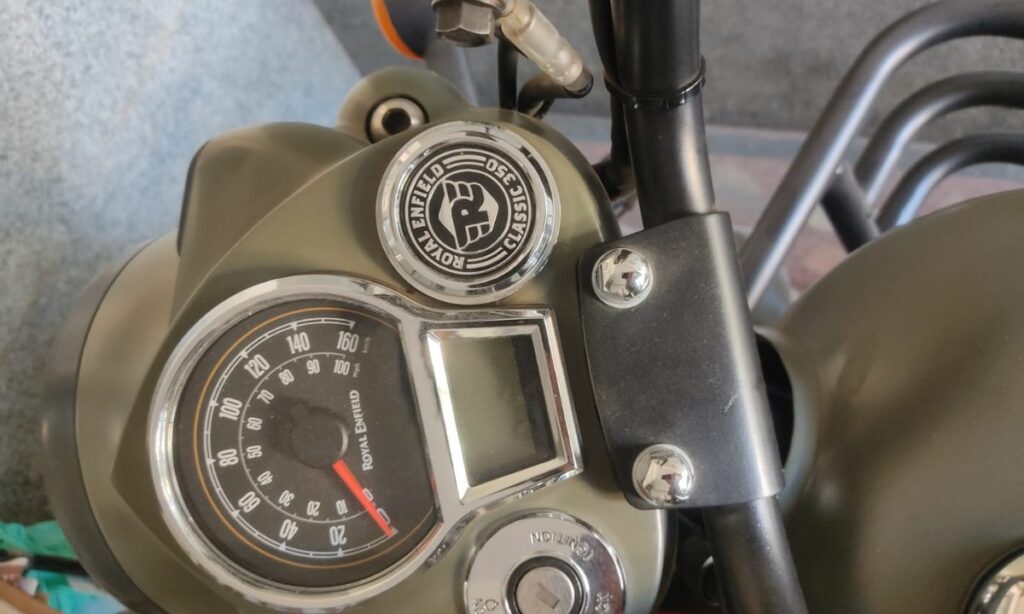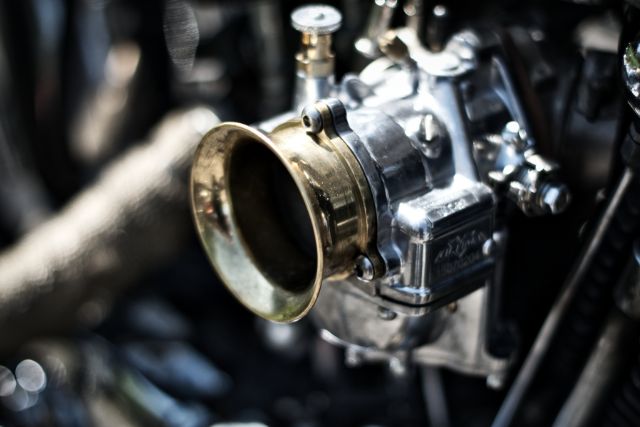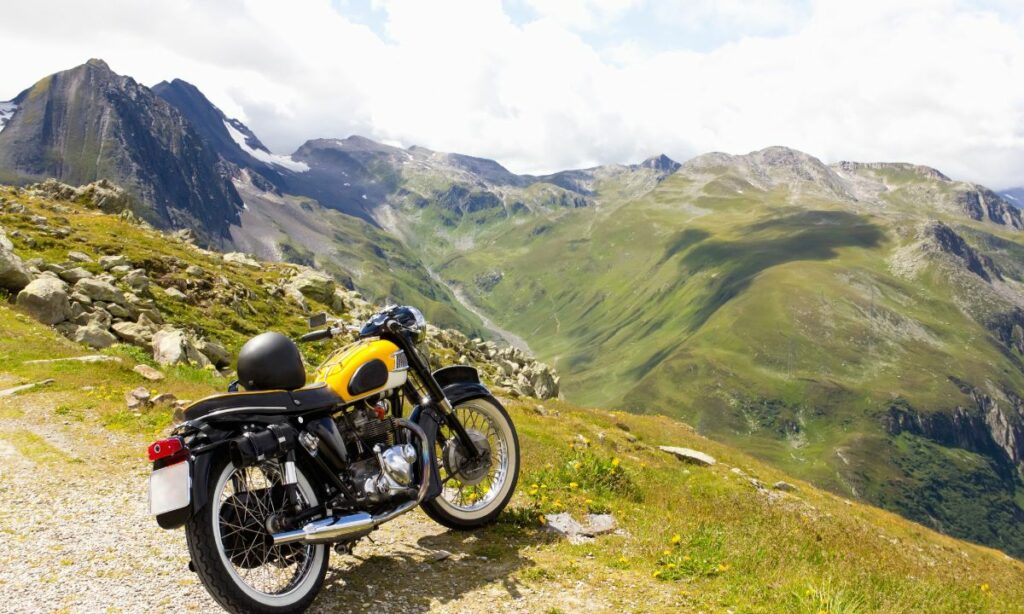Carbureted motorcycles are below par in performance when compared to fuel-injected motorcycles. There are many issues that a rider can face riding a bike with the carburetor.
Here are the most common problems of motorcycles with carburetors:
- Low fuel economy
- Backfires
- Cold starting problems
- Rich and Lean air-fuel mixtures
- Frequent engine overheating
- Can’t adapt to high altitudes
- Requires too much maintenance
Let’s deep dive into each of these problems in detail.
#1. Low fuel economy

Low fuel economy is one of the biggest problems associated with carbureted motorcycles.
The reason is simple.
The carburetor mixes air and fuel in a fixed proportion. The ratio does not change according to the needs of the engine. No matter what the outside temperature, pressure, or humidity is – the air-fuel mixture remains the same.
Compare that to a fuel-injected motorcycle.
The air-fuel ratio constantly changes depending on the engine’s needs.
The ECU (electronic controlled unit) regularly changes the ratio by varying the amount of fuel entering the engine based on the information it receives from its sensors.
As a result, the fuel is managed in a far better way in fuel injection systems.
And hence, the fuel efficiency in carbureted motorcycles is lower when compared fuel injected bikes.
#2. Backfire

Motorcycle backfire is a mistimed detonation of unburnt fuel anywhere between the combustion chamber to the exhaust.
Most commonly, this detonation takes place in the exhaust once the unburnt fuel comes in contact with the hot air in exhaust system.
This detonation of the fuel will create a large popping sound, thus, creating a backfire noise. You can easily identify whenever your motorcycle backfires simply from the sound of it.
Repeated backfires are bad for the bike. There will be – loss of power, low engine output, low fuel economy, and can also result in bluing or coloring of the exhaust pipe.
Backfire is caused when the carburetor tuning is off. The resulting mixture – either too rich or too lean – leaves too much unburnt fuel that gets burnt in the exhaust.
Along with wrong carb tuning, clogged jets and dirt in the carburetor also cause backfire problems.
Sure, even fuel-injected motorcycles can also face these issues if there is a high-flowing exhaust or the spark plug is masked.
But in carbureted motorcycles, the bike is much more susceptible to backfire problems.
#3. Cold starting problems

Cold start refers to starting the engine in cold weather conditions and/or low-temperature environments.
And cold starts are difficult in carbureted motorcycles.
The motorcycle won’t start easily in cold weather or low-temperature conditions.
The rider has to try starting the engine several times before the engine actually starts. Usually, the engine only starts if the choke is on. Without the choke on, the carbureted engine won’t start at all in cold weather.
This is one of the major annoyances riders face.
The same problem hardly exists in fuel-injected motorcycles. Heck. There is no need for a choke in these fuel-injected engines at all. Cold starting is not at all an issue in these bikes.
So, if you own a carbureted motorcycle, be prepared for cold starting problems.
#4. Rich and Lean air-fuel mixtures

A rich air-fuel mixture refers to more amount of fuel in the mixture than required. Here the quantity of air is low and the fuel is high than the optimum proportion.
A lean air-fuel mixture, on the other hand, refers to more amounts of air present for the quantity of fuel in the mixture. The fuel amount is low and the air is too much here.
Both rich and lean air-fuel mixtures are not optimal for the engine.
And sub-optimal fuel mixtures are common in carbureted motorcycles.
Even if the carburetor tuning is slightly off, the fuel mixture will get either rich or lean. And both are bad.
A rich air-fuel mixture in the engine will have too much fuel than required. The engine will not burn the entire fuel. As a result, there will be a lot of unburnt fuel that exits the engine. Needless to say, the fuel efficiency will drop with a rich fuel mixture.
A lean air-fuel mixture will have so much air that it causes too much heating in the engine. The heat produced after combustion in the engine will not have sufficient exhaust gases to carry it. The air will be superheated and will eventually transfer the heat to the engine components.
The lean air-fuel mixture is a common cause of engine overheating. Which brings us to the next point.
#5. Frequent engine overheating

If the carburetor tuning is not right – leading to a lean fuel mixture, the engine is going to overheat.
Engine overheating is common in carbureted motorcycles.
Engine Overheating can be detrimental to your motorcycle’s health.
The consequence of an overheated engine can be quite extreme ranging. For starters, it can be as simple as low mileage and low fuel economy. Then, there can be hard gear-shifting problems.
At the extreme end, too much frequent engine overheating can lead to damaged cylinder lining. Where the only solution is to rebore the cylinder or change it entirely.
Within carbureted motorcycles, liquid-cooled engines fare better and don’t overheat much. The credit of course goes to the superior cooling system.
But air-cooled carbureted motorcycles are frequently prone to engine overheating.
#6. Can’t adapt to high altitudes

Carburetors are tuned for normal weather conditions. That’s how the air-fuel mixture goes in all carbureted motorcycles.
The moment you take your motorcycle to a different weather condition that carb is not tuned for, the fuel mixture goes for a toss. It gets so skewed from the required fuel mixture – the engine starts sputtering and delivering low power output.
The problem is much more noticeable and pronounced when you take your motorcycle at high altitudes.
The low temperature, low pressure, and the cold atmosphere is a nightmare for the carburetor tuned for normal weather conditions.
That’s why you see so many engine starting and sputtering problems with carbureted motorcycles. Especially at high altitudes.
The same problems do not exist in fuel-injected motorcycles.
Fuel injection has different sensors that it uses to continuously change the air-fuel mixture to optimum levels.
At high altitudes, the O2 sensor on the exhaust helps the fuel injection to adjust for the low temperature and pressure in the fuel mixture. As a result, the engine does not have any problems with these bikes.
So if you ride a carbureted motorcycle, make sure the choke works well before going for a ride to the Himalayas!
#7. Requires too much maintenance

Unlike fuel injectors, carburetors and parts associated with carburetors in motorcycles require too much maintenance.
Carburetor tuning. Cleaning the dirty carb. Unclogging the pilot jet and the main jet. Even clean the pipes and hoses.
That’s how much regular maintenance a carburetor demands.
You need to clean the carb once every year to maintain the carburetor in its optimum working condition.
In addition, the carburetor should be tuned and adjusted for idle speed every 6 months.
It doesn’t end there.
In addition, parts associated with carburetor needs to be maintained as well. Fuel pipes, petcock, mechanical gauges, and hoses should be inspected periodically as well.
Compare that to the fuel injection. The maintenance work is almost negligible.
There is a good side to this though. Since carburetors operate mechanically, repair work is easy. But if the fuel injector gets damaged, it’s a headache for sure.
Still, fuel injection does not regular maintenance upkeep.
Carbureted motorcycles need you to constantly maintain every six months or so.
